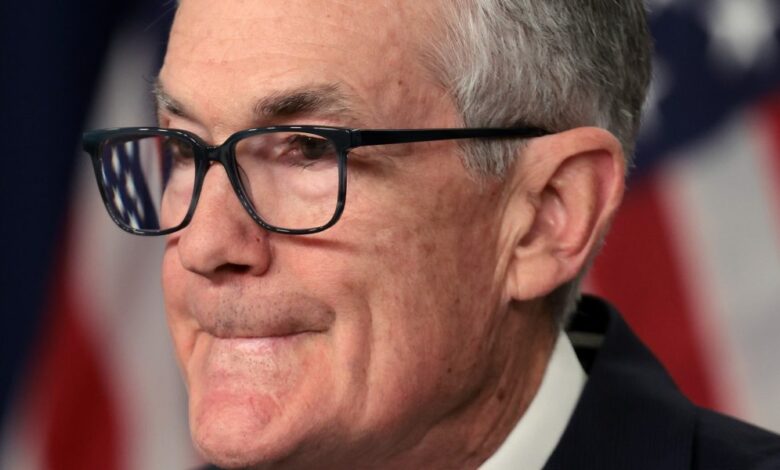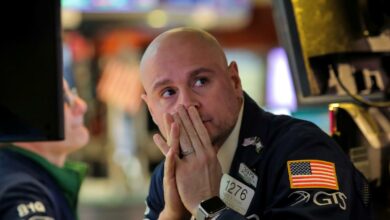What is the current national debt, how can the U.S. get out of debt?


Among the illustrious nameplates adorning the offices of Ivy League business schools is one Joao Gomes. A Wharton Business School finance professor, Gomes is issuing a warning cry many of his peers so far have chosen to ignore: America’s burgeoning public debt mountain.
Professor Gomes is what some might call up-and-coming: He was appointed senior vice dean of research in 2021, adding University of Pennsylvania’s Marshall Blume Prize to his CV in 2018.
But the fresh-faced expert isn’t afraid to step away from the pack if it means pushing presidential hopefuls for some answers. Gomes admits he’s “probably” more worried than his colleagues about government debt, but refuses to stay silent on a broiling issue he believes will throw the global economy into disarray.
Gomes predicts America’s $34 trillion debt burden may upset the world’s financial markets as early as next year—should a president-elect announce a raft of expensive policies.
And remember the UK’s mortgage meltdown following a disastrous premiership under Prime Minister Liz Truss? That’s on the cards as well, as Gomes said rates could spiral to 7% “or higher” if the topic is swept under the rug by Washington.
The warning isn’t chiming alone. Since the beginning of the year an increasing cacophony of alarm bells has been ringing out: JPMorgan Chase CEO Jamie Dimon says there will be a market “rebellion” over the issue while Bank of America CEO Brian Moynihan says it’s time to stop “admiring” the problem and instead do something about it.
This fear is echoing outside of Wall Street, too. The Black Swan author Nassim Taleb says the economy is in a “death spiral,” while Fed Chairman Jerome Powell says it’s past time to have an “adult conversation” about fiscal responsibility.
But despite this, presidential candidates likely won’t be getting on stage with promises of how they’ll wrestle down the debt-to-GDP ratio to a more palatable figure (experts are currently predicting it will reach 190% by 2050.)
“I wish it was a big issue but I’m not sure it’s in the interest of either party to make it a big issue,” Gomes told Fortune. “As we discuss promises about: ‘What we’re going to do with tax and programs’ it’s going to be important to put it in the context of: ‘Can we afford that?’”
“It’s a really obvious moment in history for us to say: ‘OK, what are our choices, what can we feasibly do, who has the better plan?’ I suspect neither party is interested in that and it might all be pushed under the rug.”
I probably worry about the US debt more than most of my professional colleagues. But in this election year I believe voters should ask much tougher questions of politicians that don’t take this threat seriously. https://t.co/TDMDbCssVi
— Joao Gomes (@ProfJoaoGomes) February 16, 2024
Indeed, while one party will have to make some unpopular decisions to tackle the issue, it’s a problem created by both of them. Bank of America Research’s Flow Show team, led by investment strategist Michael Hartnett, calculated in February that the deficits run up under the tenures of Presidents Trump and Biden are the greatest since Franklin D. Roosevelt in the 1930s.
Trump and Biden both dealt with a crisis-struck economy trying to navigate a global pandemic. FDR, of course, was firefighting the Great Depression and then oversaw the American entry into World War II.
Gomes believes that irrespective of who contributed to the mess, one party is going to have to shoulder the responsibility for unpicking it: “Toward the latter part of the decade we will have to deal with this.”
“It could derail the next administration, frankly. If they come up with plans for large tax cuts or another big fiscal stimulus, the markets could rebel, interest rates could just spike right there and we would have a crisis in 2025. It could very well happen. I’m very confident by the end of the decade one way or another, we will be there.”
Warning signs
As with any financial crisis, there will be warning signs when the national debt comes home to roost—though for consumers and markets this realization may not happen in synchrony.
At a policy level, Gomes believes, this will be when the parties buying debt decide the model is simply no longer sustainable. This could even be triggered by government policies announced early in the next administration, which in turn will spook a market seeing a hefty price tag attached.
“The most important thing about debt for people to keep in mind is you need somebody to buy it,” Gomes told Fortune. “We used to be able to count on China, Japanese investors, the Fed to [buy the debt]. All those players are slowly going away and are actually now selling.”
America’s ability to pay its debts is a concern for the nations around the world that own a $7.6 trillion chunk of the funds.
The nations most exposed are Japan, which owned $1.1 trillion as of November 2023, China ($782 billion), the U.K. ($716 billion), Luxembourg ($371 billion), and Canada ($321 billion).
“If at some moment these folks that have so far been happy to buy government debt from major economies decide, ‘You know what, I’m not too sure if this is a good investment anymore. I’m going to ask for a higher interest rate to be persuaded to hold this,’ then we could have a real accident on our hands,” Gomes said.
In this case, Gomes believes America would see something of a Liz Truss-like implosion. In 2022, the British MP backed a mini-budget featuring a raft of fiscal stimulus, spooking the City to the extent that the pound spiraled to its lowest value ever against the dollar.
After the shortest premiership in British history, Truss was promptly ousted, but not before leaving a legacy: British mortgage rates increased by approximately 2% in a matter of weeks.
And following this trend, mortgages—a cornerstone of Western economies—are precisely where consumers will start to feel the heat. When mortgage rates go above 7% is when consumers will start pushing for change, said Gomes, adding that if policymakers don’t take steps now the public will be back to these rates, “if not worse.”
Avoiding exposure
The good news is, there are a couple of ways to avoid this crisis. The bad news is, nothing at all needs to happen for government debt to become the economic issue of the next decade—and it’ll be pretty unavoidable once it gets here.
And if you’re wondering how much debt the government would need to recoup per person, it’s not pretty: current estimates are that it’s over $100,000 for each individual.
The route to avoiding this problem sounds simple: After all, if the debt-to-GDP ratio is what’s got everyone so concerned, just upping the second variable will rebalance it, right? Yes, but it means growing the economy pretty swiftly, and few are convinced America can do that.
The second solution is unpopular, but may be the only alternative the government is left with: Cutting spending. “Responsible budget proposals” may suffice to stave off any market upset, Gomes said, while “imposing major cuts on some programs … opens a Pandora’s box of social unrest that I don’t think anybody wants to think about.”
If markets do indeed rebel across the globe and throw the world’s largest economy into disarray, the ripple effects will be felt across borders. Unfortunately, Gomes believes there will be no avoiding it: “A government that runs into funding difficulties, that cannot convince investors to fund its debt, that government is going to probably have to raise taxes. There’s no way you can protect yourself from that.
“Any exposure you have, whether it’s mortgages or loans, is really hard to avoid in any dimension. It’s bad across the board for the country but it’s hard to avoid exposure wherever you live in the world.”




